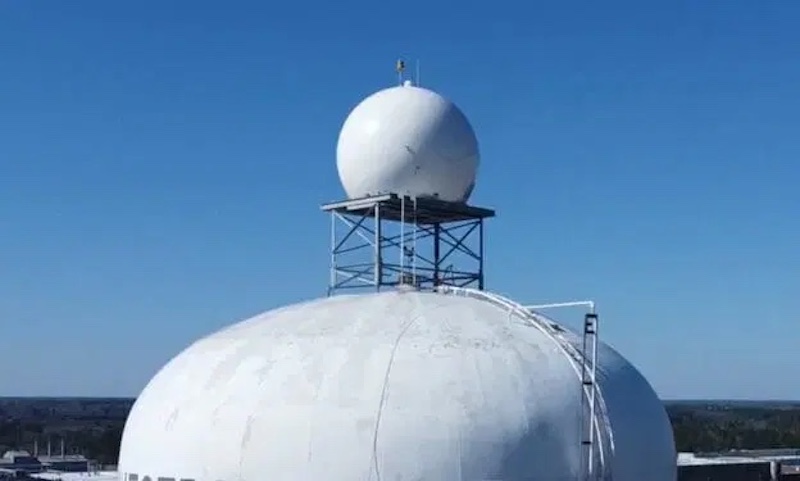
The Intersection of Radar Technology and Weather Forecasting
Weather predictions are essential in our routines, helping us plan activities based on the weather conditions. Radar technology is a tool in weather forecasting, enabling meteorologists to monitor and track weather patterns accurately.
This article will explore the connection between radar technology and weather forecasting, how radar functions, its importance in predicting weather occurrences, and its influence on our schedules.
Exploring Radar Technology
Radar, derived from radio detection and ranging is a technology that employs radio waves to detect objects distances, positions and movements. Its operation involves sending out radio waves that bounce off objects or targets before being received.
The reflected signals are then analyzed to determine the objects location and other pertinent details. Understanding how radar is radar used to forecast weather involves applying similar techniques to detect atmospheric conditions.
Role of Radar Systems in Weather Prediction
Specialized meteorological radar systems are specifically designed to monitor conditions related to weather phenomena. These systems consist of four components:
- The transmitter sends electromagnetic signals or pulses into the atmosphere.
- The antenna assists in sending out these signals into the air while also picking up echoes bounced back from objects like raindrops, snowflakes, or hailstones.
- The receiver gathers the returning echoes from targets detected by the antenna.
- The signal processor examines the received data and transforms it into information that meteorologists can interpret.
Types of Radar Used in Weather Prediction
In weather forecasting, two main types of radar are utilized.
Reflectivity Radar: This type measures the strength of echoes reflected from precipitation particles within a storm cloud system or severe thunderstorms. It offers insights into precipitation rates and helps pinpoint areas with rainfall or severe storms.
Doppler Radar: It aids meteorologists in understanding how winds impact weather patterns such as updrafts, downdrafts, or rotation within thunderstorms. Doppler radar is especially valuable for detecting tornadoes and predicting their paths.
Importance of Radar in Weather Forecasting
Accurate prediction of weather events is crucial for saving lives and reducing property damage.
Radar technology is vital in aiding meteorologists by offering real time insights into weather events like thunderstorms, hurricanes, tornadoes, and winter storms.
- Early Detection of Severe Weather: Radars can spot weather patterns forming and progressing earlier than other observation methods, such as satellite imaging or ground-based stations. This early detection enables meteorologists to issue warnings and advisories for regions that may be impacted.
- Tracking Storm Movement: Radar assists meteorologists in monitoring the path and intensity of storms. This information is crucial for assessing threats, predicting arrival times of weather events, and issuing accurate alerts to vulnerable communities.
- Identifying Rotation Patterns: Doppler radar scans help identify movements within storms that could potentially lead to tornado formation or intensification. Prompt detection through radar allows forecasters to issue tornado warnings promptly providing individuals with time to seek shelter.
- Precipitation Estimates: Reflectivity radars offer data on precipitation rates within storms, allowing hydrologists and emergency management officials to efficiently estimate potential rainfall amounts. This data aids in flood forecasting and preparedness efforts.
Impacts on Our Daily Lives
Radar technology benefits more than just meteorologists. It plays a role in our lives:
- Flight Safety Enhancement: Radar assists air traffic control by providing real-time weather updates near airports and flight paths, ensuring pilots’ navigation, and helping airports manage operations during weather.
- Improved Disaster Readiness: Through timely information, radar technology greatly enhances disaster preparedness efforts. It enables emergency management agencies to make informed decisions regarding evacuations, resource distribution, and response tactics.
- Safety at Outdoor Events: Radar-based weather predictions offer event organizers data for organizing activities like sports events, concerts, or festivals. This ensures the safety of attendees and reduces the risks associated with weather incidents.
In Conclusion
The use of radar technology has transformed how we understand weather patterns and improve forecast accuracy. Whether predicting weather in advance, ensuring air travel, or enhancing disaster readiness, radar plays a vital role in safeguarding lives and property.
With the evolution of technology, we can anticipate the development of precise and advanced radar systems that will enhance our comprehension of the dynamic atmosphere. The fusion of radar technology and weather prediction significantly boosts safety.

